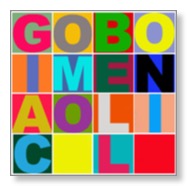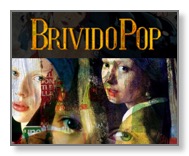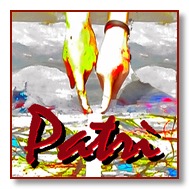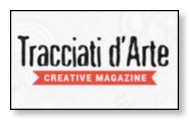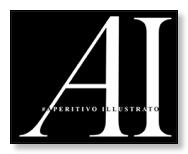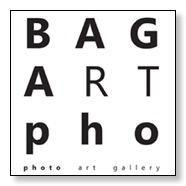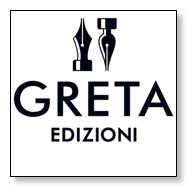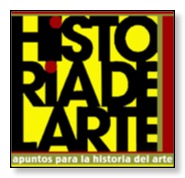Testo pubblicato su: 
_________________________________________________________________
Patrì, beyond non-reflection
by Giacomo Belloni
Men make their own history, but they do not make it as they please; they do not make it under self-selected circumstances, but under circumstances existing already, given and transmitted from the past. The tradition of all dead generations weighs like a nightmare on the brains of the living. And just as they seem to be occupied with revolutionizing themselves and things, creating something that did not exist before, precisely in such epochs of revolutionary crisis they anxiously conjure up the spirits of the past to their service, borrowing from them names, battle slogans, and costumes in order to present this new scene in world history in time-honoured disguise and borrowed language. (Karl Marx – The Eighteenth Brumaire of Louis Bonaparte – 1852)
It was a festive kind of Sunday, made even more pleasant by one of the first appearances of some spring sunshine. The beat of a lively electronic drum marked the Patrìs’ regular, synchronised movements as the paint fell, as if being whipped, onto the vast canvas stretched out on the floor for the occasion. An attentive and participatory public watched on enthusiastically when the inevitable Mr Know-it-all suddenly piped up, loud enough for all to hear, saying “Pollock must be turning in his grave”. Typical! Every event attracts the idiot of the day, some snotty, smart-aleck ignoramus spouting nonsense in an attempt to seem important, little realising that in actuality, his words immediately make him stand out as the one odd-ball present.
Had that person had even the most basic knowledge of the history of art – or maybe even a mere smidgen of sensibility – he would’ve known that what he was seeing was a long way from being an imitation of Pollock’s dripping style. Anyone can understand that the enthusiasm and passion of two young artists necessitates a journey of exploration that could not bypass the existence of the expressive forces of known artistic languages, usually those that have proved to be more successful, that have left a strong and recognisable trace in the lexicon of anyone wanting to work in art any time after the fifties. There is no plagiarism here, rather a deliberate choice made by the artists who have chosen to embark on a creative journey that has a solid, credible basis. If this was not the case, we would have to eliminate thousands of names from the list of modern artists as no one has absolute control of the images in one’s mind even during creative periods, and we remember and re-categorise our mental archives never once intending to copy. If it were not for the existence of such archives, no one could become someone, and even more to the point, no one with no past memories could ever be anybody. It is a concept Marx explains well in the opening paragraph of the Eighteenth Bromaire of Louis Bonaparte cited above.
But there is more to it that that, much more. So far we have borrowed an unhappy phrase as a pretext for contextualising and justifying a successfully executed dripping and the reasons why, regardless of anything else, no artist or engaged onlooker could succeed today.
There is something else we would like to say about Patrì and the work produced, even if, in the end, we have to acknowledge that it revolves around the phrase uttered by the know-it-all during that famous performance.
Much road has been trodden since that Sunday in spring. It can be seen clearly in the works included in today’s catalogue, that the research the Patrì partnership has done has been resolute and steady, as has the growth and improvement achieved, resulting in the inclusion of new and extremely interesting elements in their work. From the beautiful, and by now well-proven “dripped” backgrounds, amazing, colourful objects emerge – sometimes appearing to float and sometimes apparently all jumbled – seeming to come from some dreamlike dimension and overlapping each other in unusual but successful ways in montages full of imagination. We can see, eyes, architectural structures, trees, bulbs, balloons, strange people and even fish. Every object has a purpose and can be conceptually justified, often reinforced on the sidelines or by a written word.
Amongst these objects, it is the eye that best represents our musings and is often the controlling feature, frequently appearing as the dominant element pivotal to the entire composition. The Patrì eye however, is confused, ambiguous and sometimes unsettling. The intention is to put non only what appears before you up for discussion - namely the deceptive and threatening appearance of the evidence - but also the very essence of what can be seen, what lies behind every visual certainty.
Voir n'est pas regarder is a phrase that sometimes appears on a Patrì work - meaning seeing is not looking. To look whilst being observed at the same time by something that might – possibly – be an eye, even if what is reflected in it is anything but the reflection of the person watching. Everything refers back to something that is not reflected even if this missing reflection does not constitute any real knowledge of self or the world – on the contrary.
The eye itself might not be an eye but rather a stratagem to open up the painting area into another expressive dimension.
In other words it is a never-ending game of referrals and changing positions aimed at putting the very paradigm of artistic consumption up for discussion for as much, at least, that this can be the exclusive domain of an observer, someone who looks. I look but I don’t see, I see but am not looking and what I can see is not what I think I am looking at; nor, in truth, does what seems to be looking actually see anything as it might not even be an eye.
What the Patrìs set out to do is to reduce the importance of that which amongst the five senses is the least reliable – sight – in order to make way for an educated, cognisant vision that is only activated as part of the freedom found within sensibility. The eye is only a blind instrument of the mind that opens the way to a reflection on something that does not reflect save for on an unreflective surface.
To put something up for discussion means stepping away from certainties in order to re-think something that has previously been taken for granted and is indisputable.
Perhaps it is precisely this that is the Patrì’s answer to the comment made during that performance. All the heckler can do given that he is totally incapable of understanding, is to limit himself to the easy superficiality of appearances. That is how one “dripped” painting is nothing more than a “dripped painting”, just like those produced in the 1950s. In the same way, Magritte’s pipe can be nothing but a common or garden smoker’s pipe, even if it is painted on a canvas.
__________________________________________________________________
NOTA BENE: ARCHIVIOARTE non ha alcun fine di lucro. Ogni proposta qui contenuta ha la sola finalità di promuovere la diffusione dell'arte in quanto considerata patrimonio di tutti e per tutti. Ogni iniziativa, ogni azione ed ogni pubblicazione è autoprodotta e diffusa unicamente per amor di cultura e per il convincimento che la sua condivisione ci possa rendere più ricchi spiritualmente e più liberi.
__________________________________________________________________
"È vero, principe, che una volta avete detto che il mondo sarà salvato dalla bellezza?" Dostoevski, L'Idiota
__________________________________________________________________




